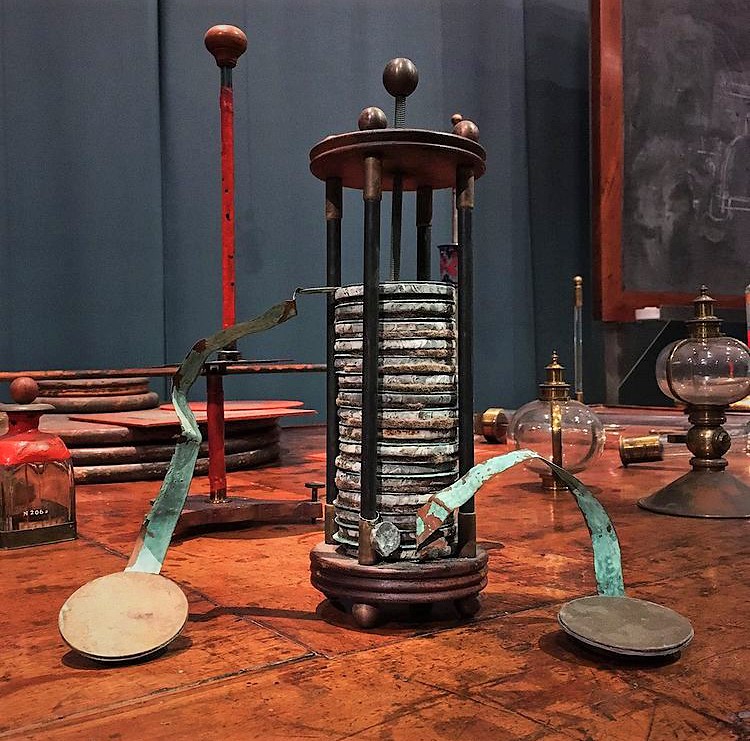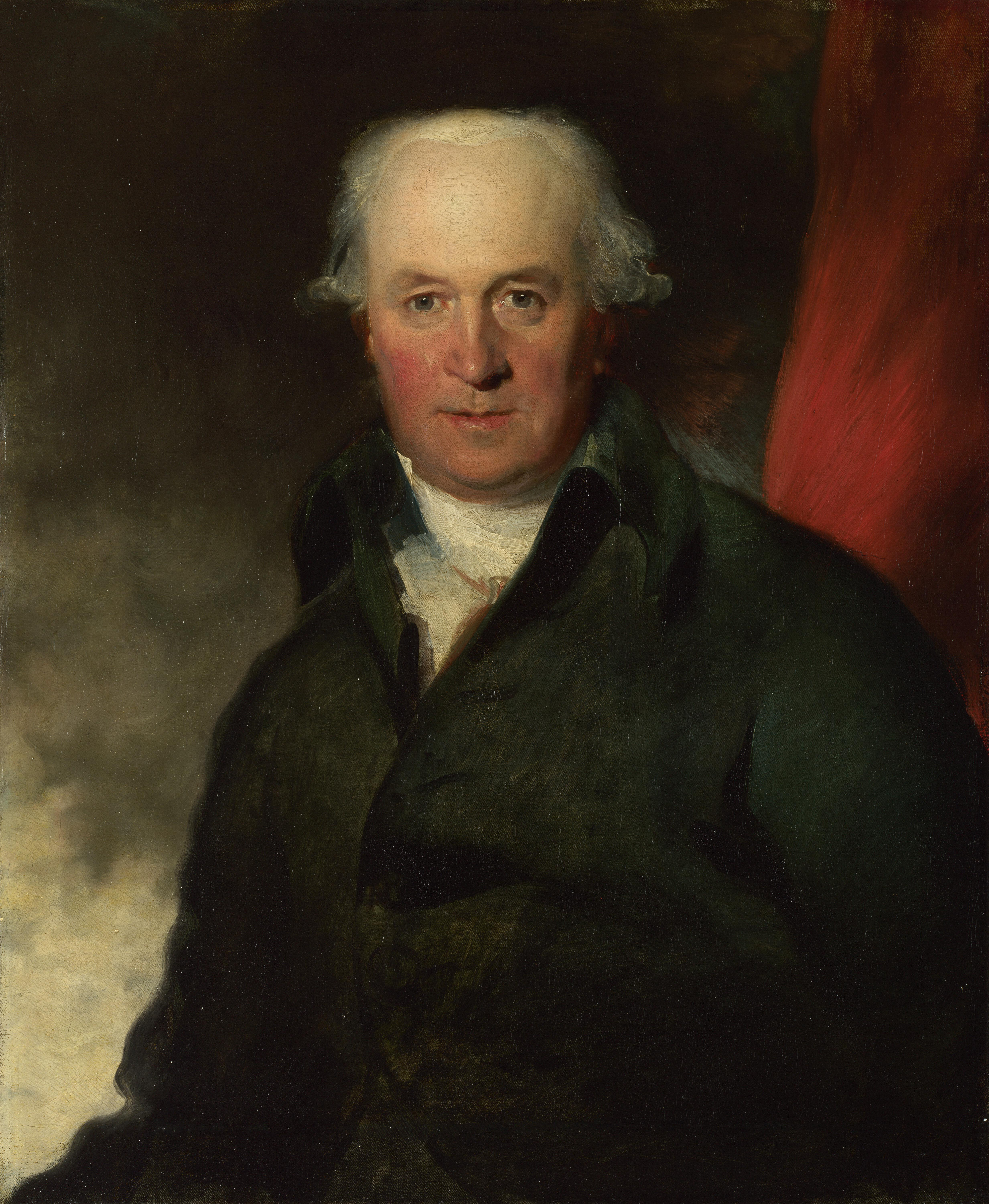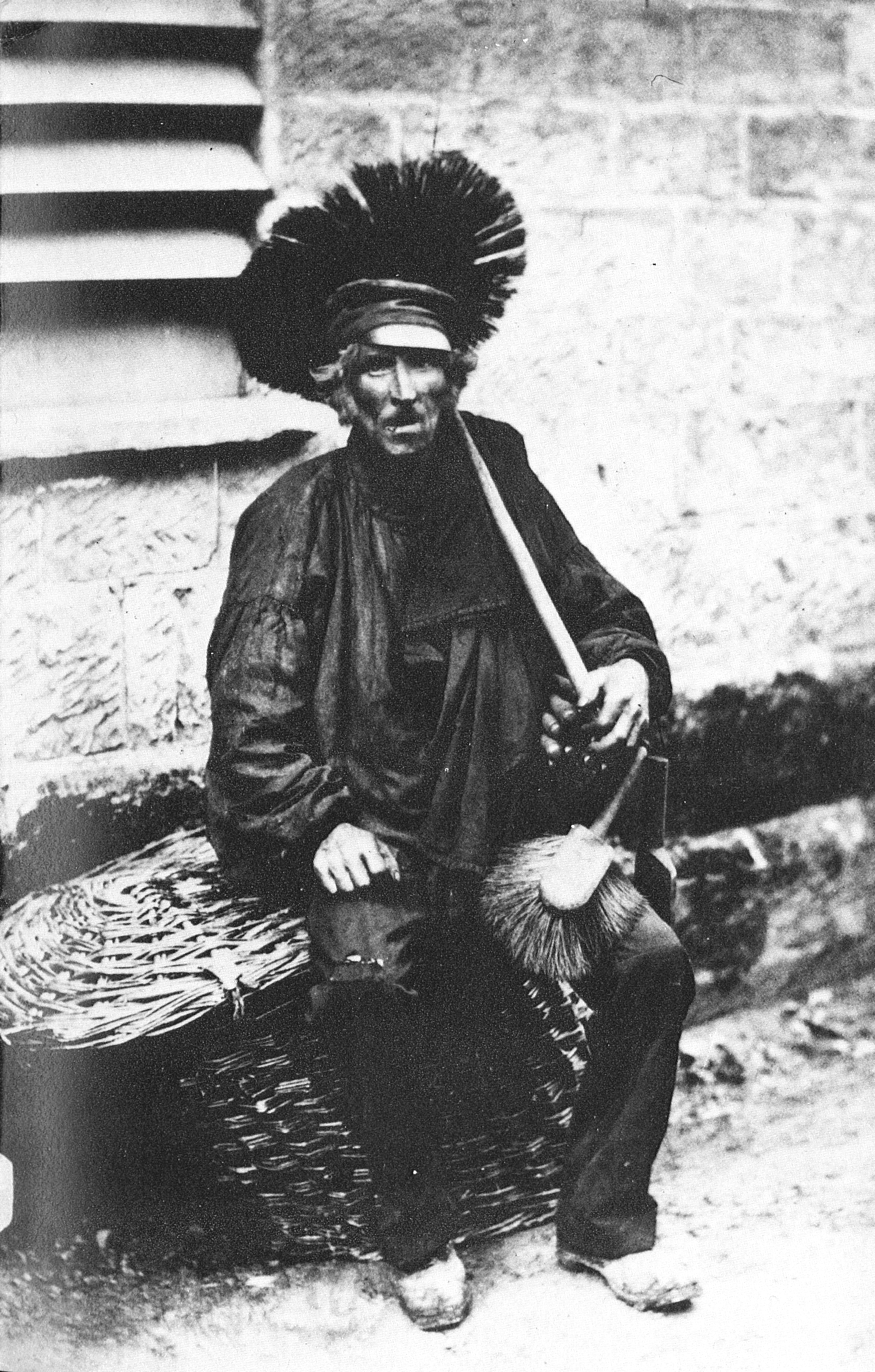|
Benjamin Meggot Forster
Benjamin Meggot Forster (16 January 1764 – 8 March 1829) was an English botanist and mycologist who published ''An Introduction to the Knowledge of Fungusses'' in 1820. Life Forster was the second son of Edward Forster the elder and his wife Susanna, and was born in Walbrook, London, on 16 January 1764. He was educated with his brothers Edward Forster the younger and Thomas Furly Forster and sister, Susanna Dorothy Forster at Walthamstow, and became a member of the firm of Edward Forster & Sons, Russia merchants, but took little interest in business. Forster never married, living with his father and mother till their death, when he took a cottage called Scotts, at Hale End, Walthamstow. There he died 8 March 1829. Works Forster was a student of science, especially botany and electricity. He executed many drawings of fungi, communicated various species to James Sowerby, and in 1820 published, with initials only, ''An Introduction to the Knowledge of Fungusses'', pp. 20 ... [...More Info...] [...Related Items...] OR: [Wikipedia] [Google] [Baidu] |
Walbrook
Walbrook is a City ward and a minor street in its vicinity. The ward is named after a river of the same name. The ward of Walbrook contains two of the City's most notable landmarks: the Bank of England and the Mansion House. The street runs between Cannon Street and Bank junction, though vehicular traffic can only access it via Bucklersbury, a nearby side-road off Queen Victoria Street, London, Queen Victoria Street. City ward A street called Walbrook runs along the lower part of the brook's course. A valley is clearly visible; this can be seen most clearly at the junction of Walbrook and Cannon Street. On the street is the church of St Stephen Walbrook, which originally stood on the west bank of the stream, but was rebuilt around 1439 on the east side. In 1666 the church was destroyed in the Great Fire of London; Christopher Wren built a new church there in 1672, which still stands, to replace it. The Bank of England The Bank of England is the central bank of the Un ... [...More Info...] [...Related Items...] OR: [Wikipedia] [Google] [Baidu] |
Electric Column
upright=1.2, Schematic diagram of a copper–zinc voltaic pile. The copper and zinc discs were separated by cardboard or felt spacers soaked in salt water (the electrolyte). Volta's original piles contained an additional zinc disk at the bottom, and an additional copper disk at the top. These were later shown to be unnecessary file:VoltaBattery.JPG, upA voltaic pile on display in the ''Tempio Voltiano'' (the Volta Temple) near Volta's home in Como, Italy The voltaic pile was the first electrical battery that could continuously provide an electric current to a circuit. It was invented by Italian chemist Alessandro Volta, who published his experiments in 1799. The voltaic pile then enabled a rapid series of other discoveries including the electrical decomposition (electrolysis) of water into oxygen and hydrogen by William Nicholson and Anthony Carlisle (1800) and the discovery or isolation of the chemical elements sodium (1807), potassium (1807), calcium (1808), boron (1808) ... [...More Info...] [...Related Items...] OR: [Wikipedia] [Google] [Baidu] |
Thomas Everett (MP)
Thomas Gregory Everett (born November 21, 1964) is an American former professional football player who was a safety in the National Football League (NFL) for the Pittsburgh Steelers, Dallas Cowboys and Tampa Bay Buccaneers. He played college football for the Baylor Bears, and was awarded the Jim Thorpe Award as the top defensive back in college football. He won two Super Bowls with the Cowboys, both over the Buffalo Bills. Early years Everett was born in Daingerfield, Texas. He attended Daingerfield High School, where he started playing football as a sophomore. Although his best position was running back, he played seven positions including quarterback. As a senior, he received All-district honors in football and basketball. He later became the first, and so far only person to have his number retired at Daingerfield High School. College career Everett accepted a football scholarship from Baylor University, where he played under College Football Hall of Fame coach Grant Teaff ... [...More Info...] [...Related Items...] OR: [Wikipedia] [Google] [Baidu] |
Thomas Charles Bunbury
Sir Thomas Charles Bunbury, 6th Baronet (May 1740 – 31 March 1821) was a British politician who sat in the House of Commons between 1761 and 1812. He was the first husband of Lady Sarah Lennox. Bunbury was the eldest son of Reverend Sir William Bunbury, 5th Baronet, Vicar of Mildenhall, Suffolk, and his wife Eleanor, daughter of Vere Graham. The caricaturist Henry Bunbury was his younger brother. He was educated at St Catharine's College, Cambridge. Bunbury was returned to Parliament as one of two representatives for Suffolk in 1761, a seat he held until 1784 and again from 1790 to 1812. He was also High Sheriff of Suffolk in 1788. Bunbury married firstly Lady Sarah, daughter of Charles Lennox, 2nd Duke of Richmond (a grandson of Charles II), and one of the famous Lennox sisters, in 1762. Their notorious marriage, which produced no children (although Sarah gave birth to a daughter by her lover, Lord William Gordon, in 1769), was dissolved by Act of Parliament in 1776 (o ... [...More Info...] [...Related Items...] OR: [Wikipedia] [Google] [Baidu] |
John Julius Angerstein
John Julius Angerstein (1735 – 22 January 1823) was a London businessman and Lloyd's underwriter, a patron of the fine arts and a collector. It was the prospect that his collection of paintings was about to be sold by his estate in 1824 that suddenly galvanised the King, George IV, and the prime minister, Lord Liverpool, into purchasing his collection for the nation and led to the founding of the British National Gallery in Angerstein's house at 100 Pall Mall. Parentage John Julius Angerstein was born in St Petersburg, Russia, in 1735. It has wrongly been suggested that he was a natural son of Empress Catherine II or of Elizabeth, Empress of Russia. Family tradition holds that his true parents were Empress Anna of Russia and the London businessman Andrew Poulett Thompson; his first position after arriving in London at the age of fifteen was in Thompson's counting-house. Family In 1771 Angerstein married Anna Crockett (widow of Charles Crockett and daughter of Henry Mu ... [...More Info...] [...Related Items...] OR: [Wikipedia] [Google] [Baidu] |
Windsor Castle
Windsor Castle is a royal residence at Windsor in the English county of Berkshire. It is strongly associated with the English and succeeding British royal family, and embodies almost a millennium of architectural history. The original castle was built in the 11th century, after the Norman invasion of England by William the Conqueror. Since the time of Henry I (who reigned 1100–1135), it has been used by the reigning monarch and is the longest-occupied palace in Europe. The castle's lavish early 19th-century state apartments were described by early 20th century art historian Hugh Roberts as "a superb and unrivalled sequence of rooms widely regarded as the finest and most complete expression of later Georgian taste".Hugh Roberts, ''Options Report for Windsor Castle'', cited Nicolson, p. 79. Inside the castle walls is the 15th-century St George's Chapel, considered by the historian John Martin Robinson to be "one of the supreme achievements of English Perpe ... [...More Info...] [...Related Items...] OR: [Wikipedia] [Google] [Baidu] |
Joseph Glass (inventor)
Joseph Glass (1791/2 – 29 December 1867) was the inventor of a successful chimney-sweeping apparatus, and a campaigner against boys being employed in sweeping chimneys. Life He was born in Colchester, in Essex, England; after early years in Manningtree, he moved to London, working as a builder. By the 1820s he had a chimney-sweeping business. During this period there was a movement to prevent boys being employed in cleaning chimneys. The Society for Superseding the Necessity of Climbing Boys (SSNCB) was founded in 1803 under the patronage of the Duchess of Gloucester. The SSNCB and the Royal Society for the Encouragement of Arts, Manufactures and Commerce promoted a competition for an effective apparatus for cleaning chimneys. Several systems were invented; one invented by George Smart was awarded a gold medal by the Society of Arts in 1805. However it had little effect on the campaign.Jackson, Lee (2014)''Dirty Old London: The Victorian Fight Against Filth''Yale University Pr ... [...More Info...] [...Related Items...] OR: [Wikipedia] [Google] [Baidu] |
George Smart (inventor)
George Smart (1757/8–1834) was a British British may refer to: Peoples, culture, and language * British people, nationals or natives of the United Kingdom, British Overseas Territories, and Crown Dependencies. ** Britishness, the British identity and common culture * British English, ... inventor, known for the invention of a device to clean chimneys, called the "scandiscope". He was awarded the Royal Society of Arts gold medal in 1805 for his invention, due to its potential for stopping the practice of making small children climb inside chimneys to clean them. References 19th-century British inventors 1834 deaths Year of birth uncertain {{England-engineer-stub ... [...More Info...] [...Related Items...] OR: [Wikipedia] [Google] [Baidu] |
Chimney Sweep
A chimney sweep is a person who clears soot and creosote from chimneys. The chimney uses the pressure difference caused by a hot column of gas to create a draught and draw air over the hot coals or wood enabling continued combustion. Chimneys may be straight or contain many changes of direction. During normal operation, a layer of creosote builds up on the inside of the chimney, restricting the flow. The creosote can also catch fire, setting the chimney (and potentially the entire building) alight. The chimney must be swept to remove the soot. In Great Britain, master sweeps took apprentices, typically workhouse or orphan boys, and trained them to climb chimneys. In the German States, master sweeps belonged to trade guilds and did not use climbing boys. In Italy, Belgium, and France climbing boys were used. The occupation requires some dexterity, and carries health risks. History The Tudors in England had established the risk of chimneys and an ordnance was created in 1582 ... [...More Info...] [...Related Items...] OR: [Wikipedia] [Google] [Baidu] |
Peace Society
The Peace Society, International Peace Society or London Peace Society originally known as the Society for the Promotion of Permanent and Universal Peace, was a pioneering British Pacifism, pacifist organisation that was active from 1816 until the 1930s. History Foundation The Society for the Promotion of Permanent and Universal Peace was founded after a meeting in Plough Court, Lombard Street, London, Lombard Street in the City of London on 14 June 1816, at the premises of William Allen (English Quaker), William Allen. Following the Battle of Waterloo the previous year and the decades of Napoleonic Wars, European conflict with Napoleon Bonaparte, it advocated a gradual, proportionate, and simultaneous disarmament of all nations and the principle of arbitration.Peter Barberis, John McHugh, Mike Tyldesley, ''Encyclopedia of British and Irish Political Organizations'', Continuum International Publishing Group, 2000, p.345. Many of the founders came together under the banner of Christi ... [...More Info...] [...Related Items...] OR: [Wikipedia] [Google] [Baidu] |
Society For The Abolition Of The Slave Trade
The Society for Effecting the Abolition of the Slave Trade, also known as the Society for the Abolition of the Slave Trade, and sometimes referred to as the Abolition Society or Anti-Slavery Society, was a British abolitionist group formed on 22 May 1787. Slavery was abolished in all British colonies in 1833 as a result. Historians posit that this anti-slavery movement is the first peaceful social movement which all modern social movements are built upon. The society was established by twelve men; including prominent campaigners Thomas Clarkson and Granville Sharp, who, as Anglicans, were able to be more influential in Parliament than the more numerous Quaker founding members. The society worked to educate the public about the abuses of the slave trade, and achieved abolition of the international slave trade when the British Parliament passed the Slave Trade Act 1807, at which time the society ceased its activities. (The United States also prohibited the African slave trad ... [...More Info...] [...Related Items...] OR: [Wikipedia] [Google] [Baidu] |
Perpetual Motion
Perpetual motion is the motion of bodies that continues forever in an unperturbed system. A perpetual motion machine is a hypothetical machine that can do work infinitely without an external energy source. This kind of machine is impossible, as it would violate either the first law of thermodynamics, first or second law of thermodynamics or both. These laws of thermodynamics apply regardless of the size of the system. For example, the motions and rotations of celestial bodies such as planets may appear perpetual, but are actually subject to many processes that slowly dissipate their kinetic energy, such as solar wind, interstellar medium resistance, gravitational radiation and thermal radiation, so they will not keep moving forever. Thus, machines that extract energy from finite sources will not operate indefinitely, because they are driven by the energy stored in the source, which will eventually be exhausted. A common example is devices powered by ocean currents, whose energ ... [...More Info...] [...Related Items...] OR: [Wikipedia] [Google] [Baidu] |




.jpg)
